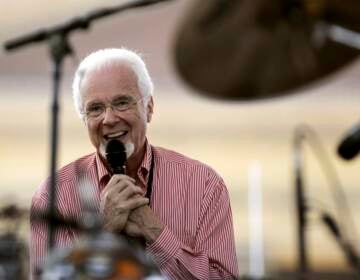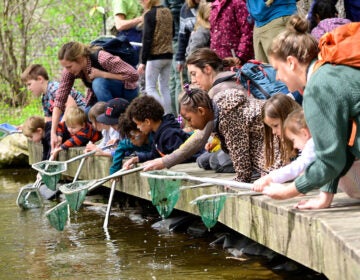October 2013
Caputo Brothers Cheese
Art of Food — Produced by Monica Rogozinski
This month, Art of Food joins David and Rynn Caputo in making handcrafted Italian cheeses at their historic farmhouse in Spring Grove, Pennsylvania. While honeymooning in Italy, the newlyweds decided to quit their corporate jobs to follow their dreams of becoming chefs. After coming home and realizing the void of cheeses they had grown to love, David and Rynn used their culinary experience in Italy to bring authentic curd recipes to Pennsylvania. The Caputo Brothers Creamery specializes in cultured cheese curds called Cagliata that can be used both by chefs and home cooks to stretch their own fresh mozzarella.
This segment features not only the curd making process, but also a farm table dinner at the 194 year-old farmhouse. Art of Food takes a tour of the creamery to see how the traditional Italian Cagliata is made. Throughout the year, the Caputos invite guests into their home to enjoy a five-course meal cooked by David. Guests participate in the preparation of dinner by helping to make cheese and pasta for the meal. Renowned Philadelphia chefs have also embraced making their own fresh mozzarella using the Creamery’s Cagliata. We’ll visit Fork Restaurant in Old City to see how much fun Chef Eli Kulp is having making his own fresh cheese.
Carol & Armand
Art of Life — Produced by Karen Smyles
At age 39 Carol Saylor earned her BFA from Tyler School of Art, where she graduated magna cum laude while raising five children and teaching art part-time with Abington Parks and Recreation. She discovered that she was losing her hearing and eyesight soon after graduating from Tyler and teaching art and humanities for 3 years at Lenape Junior High in Doylestown, PA.
Gradually she turned to sculpture during about 25 years of progressive deafness and blindness. As a mother, grandmother and great grandmother, she often had to set her art aside to care for family members. Her husband, and later a daughter, died of cancer, and she also helped care for three surviving grand daughters. These, and other life experiences have shaped and inspired her artistic work.
Armand Mednick is a sculptor who also attended Tyler School of Art, but didn’t know Carol Saylor at that time. He is known for his powerful sculptures inspired by personal experiences. Born in Brussels, Belgium, Mednick and his family escaped the Holocaust by posing as Christians for four years in France. Most of his extended family died in concentration camps in Poland. Mednick’s wife of 45 years, also died of cancer.
Mednick taught art to children at Oak Lane Day School for almost 50 years, and now teaches at the Allen’s Lane Art Center. Last Spring, Carol Saylor enrolled in one of his classes and they have been inseparable ever since. Carol is 75 and Armand is 80, but spend a few minutes around them and you’ll find that hard to believe.
Friday Arts recently spent the day with the “Young” couple, seeing and hearing why these two talented souls are now crediting the other with helping them and their work go beyond the grief.
The Beauty of Decay: Abandoned America
Art — Produced by Michael O’Reilly
In this month’s ART segment, we go aboard the SS United States, still the record-holder for fastest ocean liner in the world, yet rusting in a river berth across from the Philadelphia IKEA. Our cameras roam Pittsburgh and what was once one of the largest blast furnaces in the United States or anywhere, now long since shuttered. And we make our way into a Philadelphia building, replete with scores of abandoned pianos, with vines covering the inside of some of the century-old windows.
We follow photographer Matthew Christopher as he documents the decline of abandoned places all over the Northeastern United States, and reveals the strange beauty to be found in the decay of places like this. The pictures Christopher takes ultimately get posted on the Abandoned America website. In addition, he shows these photos at galleries and museums throughout Pennsylvania and beyond, and holds workshops in some of the spaces he photographs. In these workshops, he shares with students what he has learned about the challenges of photographing in decaying structures with no electricity yet huge amounts of natural light. He also shares some of his strategies for finding these places and gaining access, which is sometimes harder than one thinks, despite the fact the decay he seeks is all around us.
WHYY is your source for fact-based, in-depth journalism and information. As a nonprofit organization, we rely on financial support from readers like you. Please give today.




